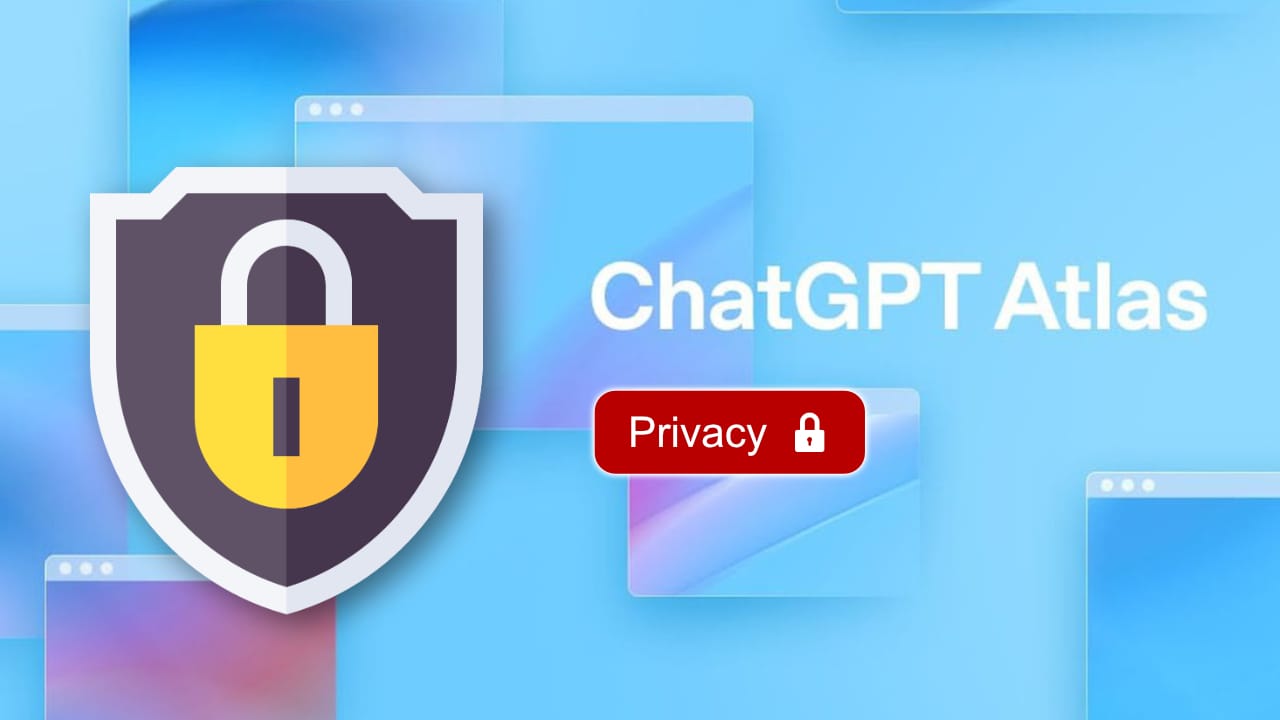A Critical Look at ChatGPT Atlas and AI Browser Privacy

The launch of ChatGPT Atlas marks a new chapter in how we browse the web and how artificial intelligence interacts with our data. Atlas blends OpenAI’s language model directly into your browser, allowing it to summarize, translate, and assist with everyday tasks. But with such deep integration comes an obvious question: how much does it actually see?
In this article, we’ll break down what Atlas can access, how its privacy model works, and why “contextual AI” can’t function without user trust.
The Rise of Contextual AI and Why Privacy Now Matters More Than Ever
Until recently, AI lived in isolated chat windows. You typed prompts, and nothing happened outside that conversation. ChatGPT Atlas changes that. It’s designed to understand where you are and what you’re doing online, in order to help more efficiently.
That shift from text-based interaction to context-based awareness fundamentally changes the privacy equation. When an AI assistant sits inside your browser, it gains visibility into the content you view. And while that makes it powerful, it also introduces risk.

Descript
AI-powered audio and video editing platform with transcription, screen recording, and publishing features. Perfect for teams looking to streamline content creation and repurposing.
- ✓ Transcription and AI-powered editing
- ✓ Screen recording and multi-track editing
- ✓ Publishing and collaboration tools
Discover smart AI tools to streamline your next automation
The question is no longer whether AI can access your data, but when and under what conditions.
How ChatGPT Atlas Handles Data Access
OpenAI has positioned Atlas as a permission-based assistant.
That means the tool doesn’t automatically read or process web content unless you explicitly allow it to.
Here’s what that looks like in practice:
- Local context access: Atlas only analyzes the page you’re on when you enable assistance for example, by highlighting text or prompting it directly.
- Session control: The AI doesn’t maintain ongoing access between pages unless you continue an active session.
- User consent: Any time Atlas needs context beyond what’s visible, it requests permission first.
In simple terms: the AI acts only when asked.
OpenAI has learned from previous criticism around opaque data use in ChatGPT and has implemented more visible consent layers. But as with any AI system, the reality depends on implementation and ongoing transparency.
What ChatGPT Atlas Can (and Can’t) See
To function, Atlas needs to interpret on-screen information that’s the basis of its contextual power.
However, it’s not designed to capture:
- Browsing history
- Private passwords or cookies
- Background tabs or other applications
What it can access temporarily is the text and metadata of the page you’re viewing when you interact with it. That’s how it can summarize an article or help draft a response.
Once the session ends, that data should be cleared from the runtime memory unless it’s part of a logged conversation saved to your ChatGPT account.
It’s similar to how screen readers or productivity extensions operate the difference is that Atlas interprets, not just displays.
The Privacy Model: User Control by Design
OpenAI has emphasized that Atlas will follow a “privacy-first” model based on user consent and transparency.
Key components include:
- Explicit prompts: You see when Atlas is active and can disable it per site or session.
- Data isolation: Each page is treated as a separate environment; Atlas doesn’t cross-read between them.
- Clear permissions: Users can set global and per-domain rules for data access.
If executed correctly, this could make Atlas one of the most privacy-conscious AI assistants to date. But execution is everything and it remains to be seen whether the rollout will truly align with these principles.
The Trade-Off Between Context and Privacy
There’s an unavoidable tension at the heart of contextual AI:
The more helpful it becomes, the more it needs to know.
For example:
- To summarize a report, it must read it.
- To refine an email, it must see what you’ve written.
- To automate a task, it must understand where you are and what comes next.
That’s not surveillance it’s functionality.
The challenge lies in ensuring the AI acts only within your scope of intent.
The best privacy model is not one that hides intelligence behind walls, but one that gives users constant visibility and control over what the AI knows and does.
Comparing Atlas with Perplexity Comet and Other AI Tools
While Atlas focuses on contextual awareness, Perplexity Comet takes a different route: retrieval and verification. Comet pulls real-time information from the web, citing every source, which inherently limits privacy risks it deals with public data, not user data.
Atlas, by contrast, operates closer to the user assisting with personal workflows, documents, and messages. That proximity is its strength, but also where privacy oversight becomes critical.
In essence:
- Perplexity protects accuracy through citations.
- Atlas protects privacy through permissions.
Both are valid approaches and together, they show how the next wave of AI tools must balance transparency, utility, and trust.
What Businesses Should Know
If you’re considering integrating Atlas into your workflow, here’s what matters most:
- Review the data policy: Understand how OpenAI processes session data.
- Set strict internal guidelines: Define which roles can use contextual AI tools and on what type of information.
- Avoid sensitive content: Never process confidential documents through an AI assistant without clear compliance approval.
- Monitor updates: OpenAI frequently adjusts privacy terms and model behavior stay informed.
- Use sandboxed environments: For enterprise adoption, restrict Atlas usage to dedicated, non-sensitive browsers.
The goal isn’t to reject AI it’s to deploy it responsibly.
The Broader Implication: Trust Will Define Adoption
Privacy isn’t a side issue; it’s the foundation of whether AI becomes a normal part of work. Tools like ChatGPT Atlas can only succeed if people feel comfortable letting them into their professional and personal workflows.
Users don’t just want smarter AI they want transparent AI.
When browsing becomes intelligent, visibility becomes non-negotiable.
Final Thoughts
ChatGPT Atlas represents progress in how we interact with information, but progress comes with responsibility. OpenAI’s consent-based model is a strong start, yet the true test will be how clearly users understand what Atlas sees, when it sees it, and how easily they can turn it off.
Privacy isn’t a feature it’s a contract between the user and the system. If Atlas honors that contract, it could become the blueprint for safe, contextual AI browsing.
